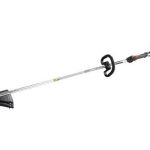Bet you didn’t think hydrogen peroxide would be good for your plants. You probably have it in your medicine cabinet in your bathroom to clean cuts and scratches. It has also been known to be a great bleach, sterilizer, animal feed treatment and even rocket fuel. Many have touted it as a miraculous health benefit.
It is also good for your garden. That’s because it consists of hydrogen and oxygen, but it also has an extra oxygen atom in an unstable arrangement that holds many benefits.
When hydrogen peroxide (also known as H2O2) breaks down a single oxygen atom and a molecule of water is released. The oxygen atom is extremely reactive and will attach to either another O-atom forming a stable oxygen molecule or attack a nearby organic molecule. Both the stable and O-forms will increase the level of dissolved oxygen. This is why hydrogen peroxide is so beneficial. It degrades pesticides and herbicides, removes methane and organic sulfates from well water, kills organism-caused diseases and spores, and eliminates infections and helps prevent future ones. It also destroys dead organic materials including leaves roots so they do not rot and spread disease.
As far as your garden is concerned, hydrogen peroxide combats root rot and over watering.
Roots require oxygen to breathe and low levels of oxygen are the cause of all root diseases. Soils may breed root rot due to over watering. However, the actual cause is a shortage of oxygen in the root zone.
Soil consists of particles with a film of water and air space between them. When the soil is saturated with too much water the air space is filled with liquid. The roots will quickly consume the oxygen that is dissolved in the water. If they don’t absorb enough of the liquid, then air is not allowed back into the soil and the roots stop working. As a result, the roots will start to die within 24-hours. As the root dies, the plant’s ability to absorb water and nutrients is decreased, causing nutrient deficiencies. This causes it to wilt. It is not uncommon for gardeners to think that the issue is due to a lack of water and over water as a result.
When you water your garden using hydrogen peroxide, the substance will break down and release oxygen into the area around the roots. This assures that oxygen is not depleted in the water that is filling the air spaces so that air can get back in. High levels of oxygen at the roots will encourage rapid healthy root growth.
Hydrogen peroxide is available in several different strengths including 3 percent, 5 percent, 8 percent, and 35 percent. The most economical strength is 35 percent. You can purchase 35-percent hydrogen peroxide from your local hydroponics retailer or online. Since hydrogen peroxide is also used to bleach hair, you can find it at local hairdressers. Most drugstores or pharmacies carry the 3-percent, 5-percent, and 8-percent hydrogen peroxide.
If using 35 percent hydrogen peroxide, it is recommended that it be diluted to 3 percent before using because high concentrations of it can cause damage to skin and clothing. It is highly recommended that you wear gloves when handling it.
To prepare hydrogen peroxide for application you will need an opaque storage container that prevents light from getting in and it must be able to handle pressure. Many recommend that you use a three-liter pop bottle. There are twelve-quarter liters in three liters. So mix one-quarter liter of hydrogen peroxide with 11-quarter liters of water. Three percent hydrogen peroxide may be added at up to three ml’s per liter (2-1/2 tsp. per gallon). However, it is recommended that you start with a lower concentration and increase to full strength over a few weeks.
Use the peroxide-treated water in dirt with anti-fungicide (benomyl) and a high phosphate fertilizer (9-45, 15, 10-52-10,0-60-0) for root growth. In addition, root booster (5-15-5) or another product with rooting hormone dissolved into the solution. If you notice that a plant is wilting, add Nutri-Boost to save it. Water heavily until the substance pours out of the bottom of the pot. Don’t sit plants in trays full of water. The soil will absorb the water and will stay too wet. Don’t water again until the pot feels light and the top inch or two-inches of soil are dry.







